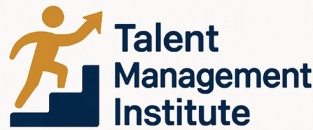
Understanding the Purpose of Performance Reviews
The Role and Significance of Performance Reviews
Performance reviews play a crucial role in any organization, serving multiple functions that are integral to maintaining a motivated and productive workforce. At the core, these evaluations are designed to assess employee performance over a specific period, traditionally on an annual basis. However, understanding the broader purpose of performance reviews can greatly enhance their effectiveness.
First and foremost, performance reviews offer a structured opportunity for managers and employees to engage in meaningful dialogue. This exchange can cover multiple areas including past accomplishments, areas for improvement, and future goals. Not only does this communication help in setting clear expectations and objectives, but it also fosters a sense of partnership between managers and their teams.
Another primary purpose of performance reviews is to provide constructive feedback. Feedback is essential for guiding employees toward skill development and problem-solving initiatives. Constructive feedback, when properly implemented, empowers employees to refine key skills and work on areas that may require attention. Ensuring that feedback is open-ended and tailored to individual needs is paramount for personal and professional growth.
It's also important to consider how these reviews impact employee development. Performance reviews should be seen as a part of an ongoing process, rather than a standalone event conducted yearly. This continuous approach helps in tracking progress throughout the year and ensures that employee evaluations are aligned with the organization's strategic goals. Moreover, review templates designed with clear evaluation forms aid in ensuring consistency, fairness, and transparency.
Ultimately, understanding the purpose of performance reviews lays the foundation for creating an effective review template. Such templates can then be customized for different roles within the organization, incorporating flexible and dynamic feedback mechanisms. Integrating feedback into the review process not only addresses potential challenges but supports the development of a thriving workplace culture.
Key Components of an Effective Review Template
Key Elements in a Performance Review Template
An effective performance review template is paramount to a constructive and thorough evaluation process. It's crucial to understand the components that make up a robust template designed to accurately assess an employee's performance and facilitate their development.- Goal Alignment: This aspect should clarify how an employee’s personal objectives align with the company's broader goals. Reflect on whether these goals have been met during the review period and identify areas for improvement or adjustment for the upcoming year.
- Core Competencies and Skills Evaluation: Clearly outline the key skills and areas critical for each role. This helps managers assess if employees possess necessary competencies like problem-solving, teamwork, and communication. Regular evaluation ensures these skills are nurtured and developed over time.
- Performance Metrics: These should be quantifiable where possible, providing managers a basis for fair employee evaluations. Metrics offer a clear picture of performance, enabling objective feedback.
- Areas for Improvement: Identifying specific areas improvement is essential. This focuses on constructive feedback that can drive growth and development. Be detailed in what needs attention and suggest actionable steps for enhancing these areas.
- Employee Feedback: Encourage open-ended feedback from employees to understand their perspective. This not only enriches the review process but also makes employees feel valued and heard.
- Development Plans: Facilitate goal setting and action plans. Tailor experiences and learning paths to individual employees to support their career trajectory and skills enhancement.
Customizing Templates for Different Roles
Adapting Review Templates for Specific Roles
Creating a one-size-fits-all performance review template might seem efficient, but it often overlooks the unique requirements of distinct roles within an organization. To prepare a truly effective evaluation form, it is crucial to customize templates according to the specific responsibilities and expected outcomes associated with each role.
When customizing review templates, consider the following factors to ensure a comprehensive assessment that aligns with employee performance and goals:
- Understand Role-Specific Goals: Different roles have different performance goals. Tailor the evaluation criteria to reflect these distinctions. For example, a sales manager might be evaluated on revenue targets, while a software developer might focus on code quality and problem solving skills.
- Define Key Competencies: Identify the key competencies or skills that are crucial for each position. An effective template will highlight these areas, allowing managers to provide targeted feedback on each employee's strengths and areas for improvement.
- Use an Open-Ended Approach: Encourage feedback that goes beyond tick boxes in your employee review template. Ask open-ended questions that prompt managers to provide detailed examples of employee contributions and achievements.
- Align with Team Objectives: Consider how individual performance contributes to team goals and overall business objectives. A well-designed evaluation form reflects teamwork and collaboration as key elements in an employee performance review.
- Incorporate Development Plans: Use the performance evaluation as an opportunity to outline a plan for professional development. Encourage both managers and employees to identify opportunities for growth, ensuring the process leads to tangible improvement.
Each of these elements helps create a review template designed to foster constructive performance evaluation. Such templates ensure that the annual performance review process is not only a check-in but a stepping stone towards continuous improvement and alignment with organizational values. For further insights on maintaining a productive team, effective ways to keep your collection team happy and productive can be explored.
Incorporating Feedback Mechanisms
Building Constructive Feedback Mechanisms
In the performance review process, incorporating feedback is critical for both managers and employees to foster growth and development. Establishing a comprehensive review template that allows for effective feedback can significantly enhance the employee evaluation. To achieve this, consider the following key components:- Structured Feedback Forms: Utilize review templates with structured questions that cover essential areas like skills, goals, and areas for improvement. This ensures feedback is comprehensive and specific.
- Open-Ended Questions: Include open-ended questions in your evaluation template to encourage employees to express their thoughts on what areas of their work they feel need improvement or development. This also enables managers to understand employee perceptions better.
- Constructive Feedback Focus: Encourage managers to focus on offering constructive feedback that is actionable. Highlighting specific areas improvement and providing clear examples can lead to more effective employee development.
- Ongoing Review Periods: Rather than limiting feedback to the annual performance review, consider implementing a continuous feedback mechanism throughout the year. This allows for timely identification of problems and more dynamic problem solving.
Addressing Common Challenges in Performance Reviews
Overcoming Obstacles in Assessment Processes
In the journey of conducting performance reviews, managers and teams often encounter several challenges. Addressing these can streamline the evaluation process and enhance the effectiveness of performance reviews, ensuring they serve as valuable tools for employee development. One common challenge is the subjectivity in performance appraisals. While templates are designed to provide structure, they can still lead to subjective evaluations. Managers must be trained to focus on objective performance metrics and concrete examples when discussing employee performance. This ensures the review is fair and focused on actual work outcomes. Another issue is the alignment of performance reviews with the organizational goals. Managers sometimes struggle to connect individual goals with the company's strategic objectives. Incorporating a section in your evaluation template that focuses on how employee achievements contribute to team and organizational goals can bridge this gap. This not only makes the process more meaningful but also boosts motivation among employees. Providing constructive feedback is crucial, yet many managers find this step challenging. Open-ended questions in the template can facilitate conversations that encourage employees to reflect on their areas for improvement. It’s essential to balance praise with constructive criticism to foster a culture of continuous improvement. Finally, inconsistent application and timing of reviews can dilute their impact. Establishing a consistent review period and adhering to it religiously ensures that performance evaluations are timely and relevant, contributing effectively to employee development plans. By addressing these common challenges, organizations can maximize the benefits of their annual performance reviews, turning them into an integral part of a comprehensive employee evaluation and development process.Leveraging Technology for Efficient Reviews
Enhancing the Review Process with Technological Solutions
In today’s fast-paced work environment, leveraging technology is pivotal in enhancing efficiency and accuracy in performance reviews. Streamlining the evaluation process with digital tools can significantly benefit both managers and employees, providing a seamless experience for everyone involved.
One of the primary advantages of integrating technology into the performance review process is the ability to create customizable templates that cater to different roles and responsibilities. This allows for a more specific evaluation, focusing on the key areas of improvement and development needed for each employee. With readily downloadable performance review templates, managers can ensure they address all essential aspects without missing any critical points.
Moreover, technologically advanced evaluation forms offer managers valuable insights by systematically collating employee performance data. This includes tracking goals over the review period and evaluating improvements in problem-solving skills or other targeted areas. Utilizing these digital tools fosters consistency and fairness in the evaluation process, thus strengthening the trust between employees and managers.
The integration of software solutions in performance evaluations also aids in setting clear goals and expectations, providing employees with the clarity needed to focus on their development areas. Reviews can be augmented with real-time feedback mechanisms, allowing for open-ended conversations and constructive feedback essential for employee growth. This approach not only benefits individual employees but also enhances team performance as a whole.
In conclusion, using technology in creating and managing performance review templates can revolutionize the annual performance review process. It allows for a more organized and impactful evaluation, ultimately supporting the continuous improvement of both employees and organizations.











